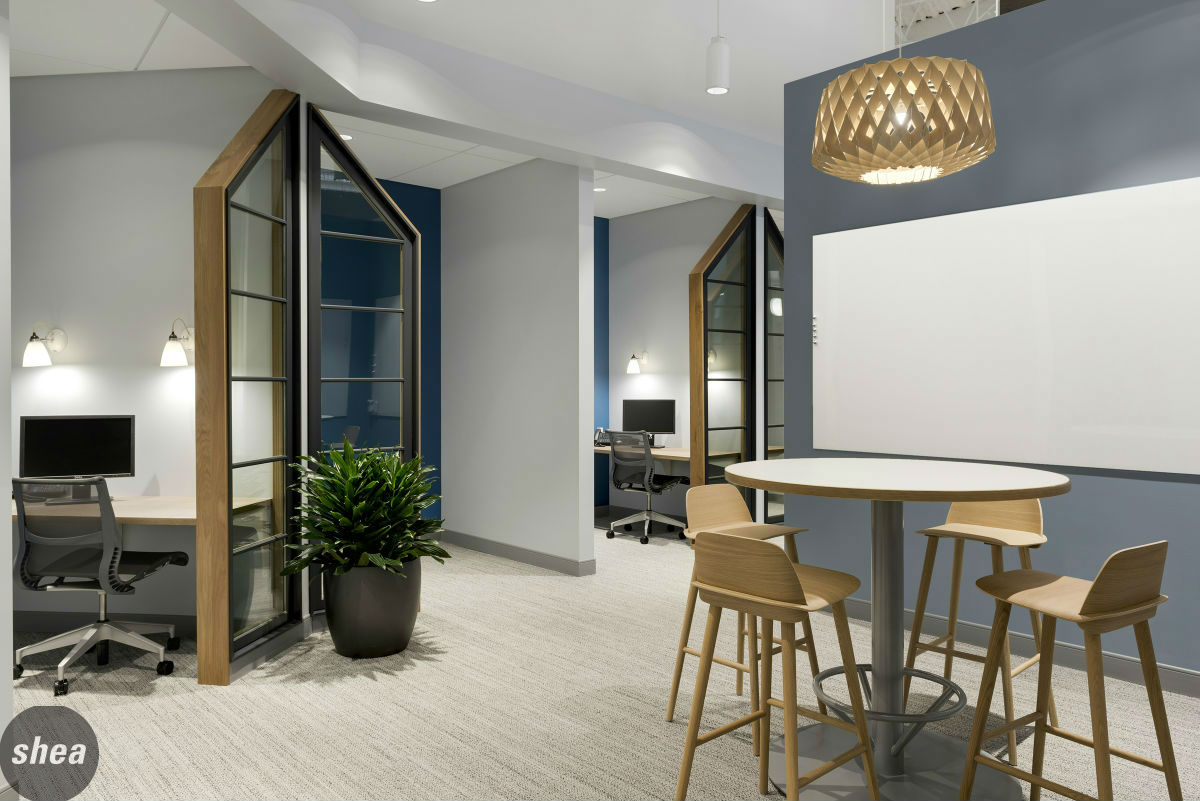At Shea, we pride ourselves on staying on top of what’s happening in design news. It helps us keep tabs on what’s fresh, inspiring, and happening in the world—and we make a few headlines of our own, too. Here are some recent articles delving into design, experience, and what’s buzzing in our community:
“Future of Open Office Design Will Focus on Occupant Health and Personalization”- Interiors and Sources:
Interiors and Sources looks towards the next era of open-office design, addressing some of the issues that it’s had in functionality by suggesting solutions and linking to some of the major pieces that have suggested that open-office culture isn’t effective. This piece discusses the future of open offices, with sustainable, healthy environments for workers, design driven by technology and data, human touches, and a design created with evolution in mind as trends and the needs of workers change.
“Demi is One of Robb Report’s Most Beautiful New Restaurants in America” – Shea:
The Robb Report recently released its list of 2019’s Most Beautiful New Restaurants in America, which includes praise for Gavin Kaysen’s tasting-menu-only spot, Demi, in Minneapolis—with a shoutout to Shea for the warm, inviting space and standout island.
“Why Is There a Coffee Shop in So Many Stores?” – New York Times:
The New York Times dives into the recent trend of boutiques putting coffee bars (large or small) within their stores—to draw people in and to keep them there. Many of these are carefully integrated into stores’ designs to be in keeping with the rest of the space, and can be grab-and-go spots or include a seating space (depending on the size of the store). Whether they’re brewing their own beans or teaming with larger-name roasters, these cafes are cropping up in both independent boutiques and national brands, with spaces and vibes that reinforce the retailer’s brands.
“Is the Era of Major Rebrandings Over?” – Fast Company:
A look at recent corporate rebrands, and how they’ve become more subtle over the last year—possibly leaving major brand overhauls in the past as they refresh rather than reinvent. Fast Company examines the most recent iterations of the Ikea, PBS, Warner Brothers, and Twitch brands to show how small changes can give a key new impression, with heritage branding redesigned to be more digital-friendly. It may simply be a tactical change as all business leans towards the digital side, but nevertheless is a strong presence in graphics today.
“Welcome to the Era of the Post-Shopping Mall” – New York Times:
This piece dives into the post-shopping-mall era, with looks at how malls have evolved less into retail spaces and more into entertainment spaces—with things like indoor theme parks (Mall of America), indoor ski hills, and more, as rising generations prefer to spend their money on experiences than things. In spite of this, the non-experiential parts of malls can still feel as empty as ever, poising the question of how these giant spaces will survive in the next decade.
“The New (Tech-Driven) Appeal of Retail Foodservice” – Foodservice Equipment & Supplies:
FES looks at the introduction of retail into noncommercial spaces, such as the healthcare, education, and business/industry sectors—all spaces filled with potential customers on the run and looking for dining options at all hours. Some are employing the “Amazon Go Model” to make grab-and-go even easier, while others work with extended hours and options to diminish menu fatigue and take advantage of unusual dayparts. The piece also looks at the impact of merchandising and layout, which have room to evolve in the noncommercial space.
“Eater Deems P.S. Steak’s Design Poised to Take Over Trends in 2020” – Shea:
Eater runs down its list of predictions for the upcoming year in restaurant design, based on the most acclaimed designs of 2019—including Shea-designed P.S. Steak (for its “maximalist walls”). Other predictions are “edgy jungle” vibes (with more exotic plants and leaves) and jewel tones used throughout restaurants, from walls to finishes and furnishings.
“The State of the Fast-Casual Industry” – QSR:
QSR examines the slowing of growth in the fast-casual industry—despite that it’s been the only foodservice market to grow in the last five years. As the market has grown more saturated, concepts have strived to find differentiators, while many have gone bankrupt, signifying that the market is a harder place for restaurants to play. This report looks at consumer share of the wallet, comp sales and traffic trends, average sales versus the rest of the food industry, how the market share is changing for fast-casual in the food industry as a whole, and how consumers are responding.
“The Next Chapter of Workplace Design: Looking Beyond Trends” – Work Design:
This piece delves into how designing a functional workplace requires intuition and an understanding of the functional and experiential needs of the end users—asserting that these should be the focuses rather than nonfunctional-but-attractive design. The “trends” this piece discusses are an inclusive, equitable approach to design (including spaces for those who work best in all formats), using data metrics to inform design (to make for the most effective and pleasing workspaces for employees), and authenticating amenities (focusing on what the workspace users really want, rather than just flashy amenities).
“2020 Vision: New Year Brings Fresh Take on the Restaurant Industry” – Foodservice Equipment & Supplies:
FES examines the question: What does the future hold for the commercial dining industry, especially as physical visits to restaurants are on the decline? Restaurants are negatively impacted by America’s changing demographics (evolving family units, new generations taking the lead in spending, trend-setting, and cooking at home), as well as a rise in alternative options for meal alternatives (meal kits, cafes in retail stores) and the continued rise of food halls that offer several options in one place, with smaller footprints. The piece concludes with the notion that in order to survive and remain a relevant option for diners, restaurants need to change operations and find a strong point of differentiation to draw new customers and retain current ones.
January 3, 2020
Shea Links: January

